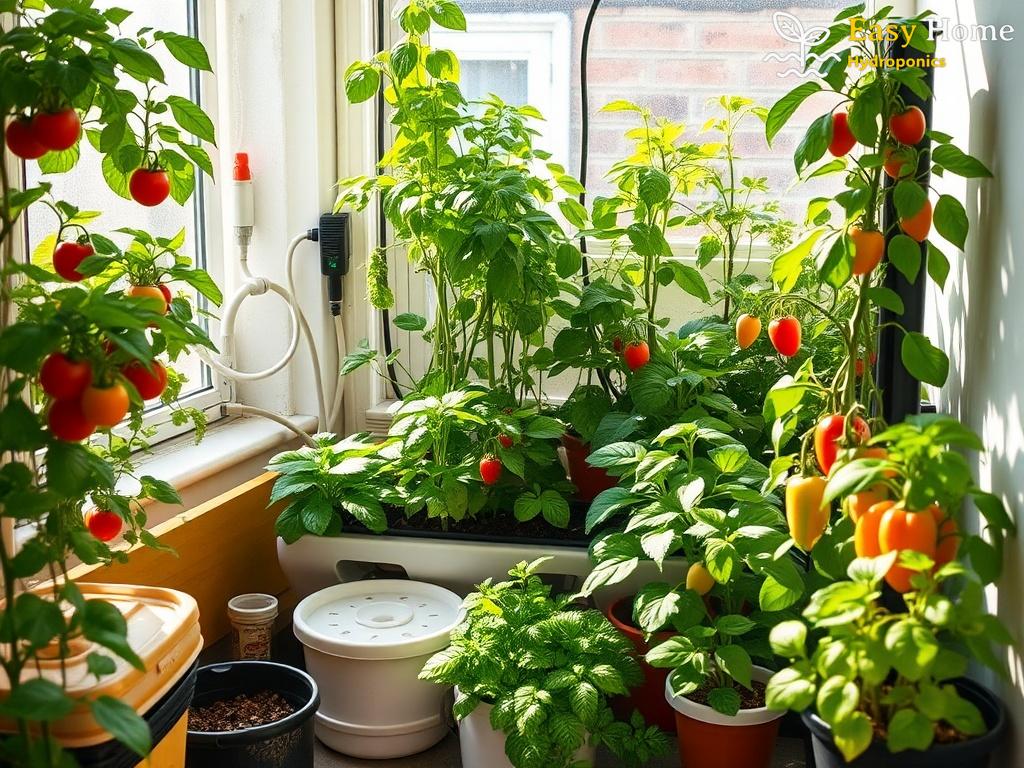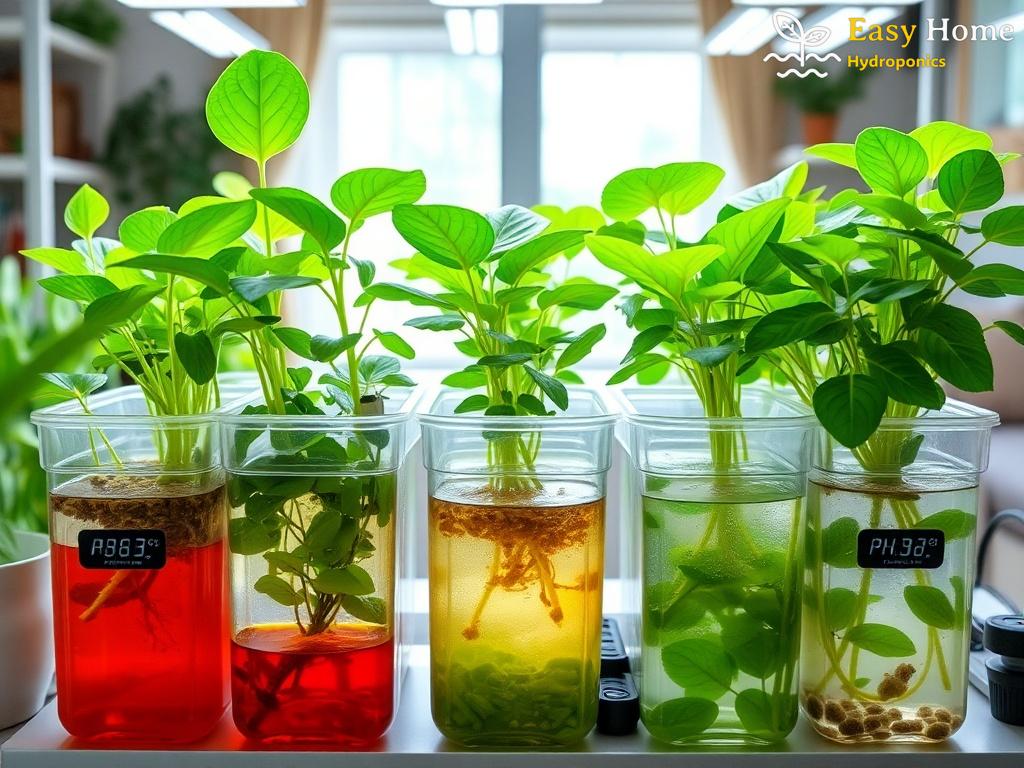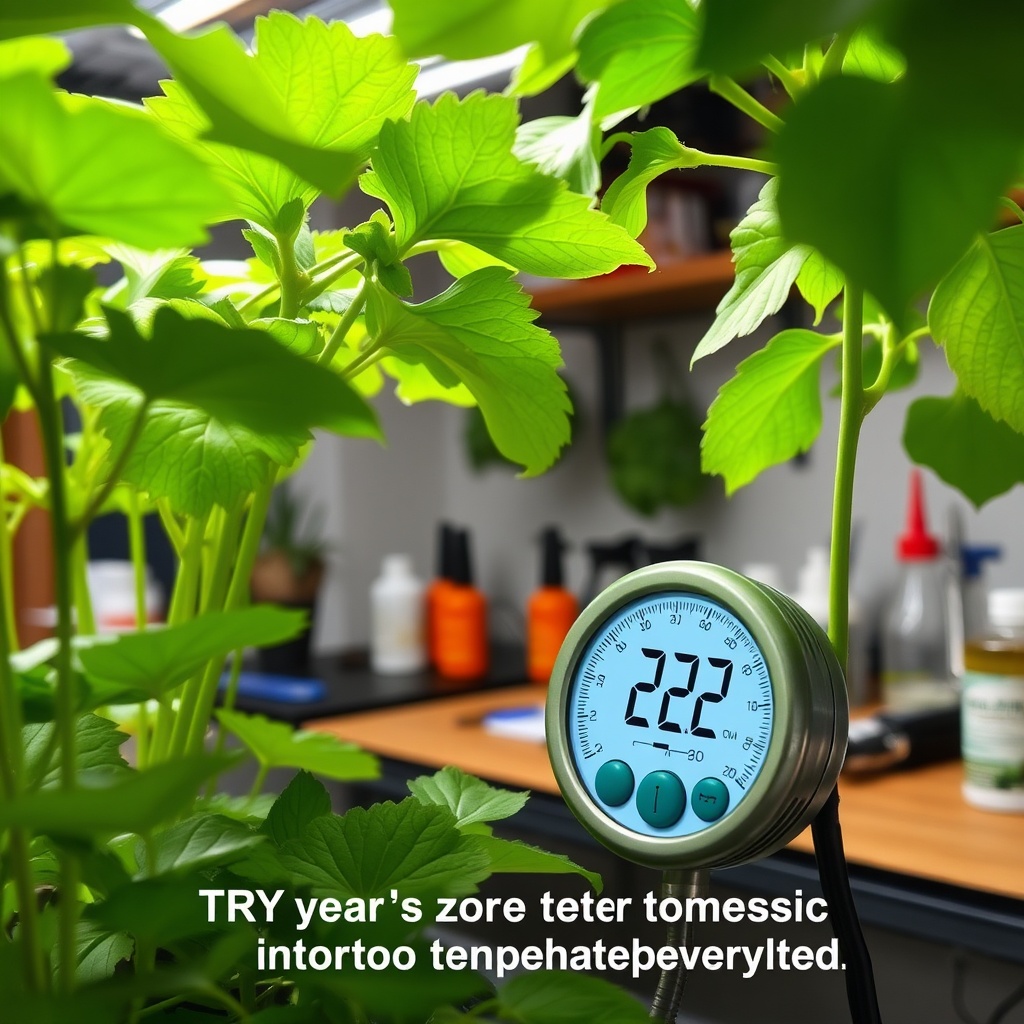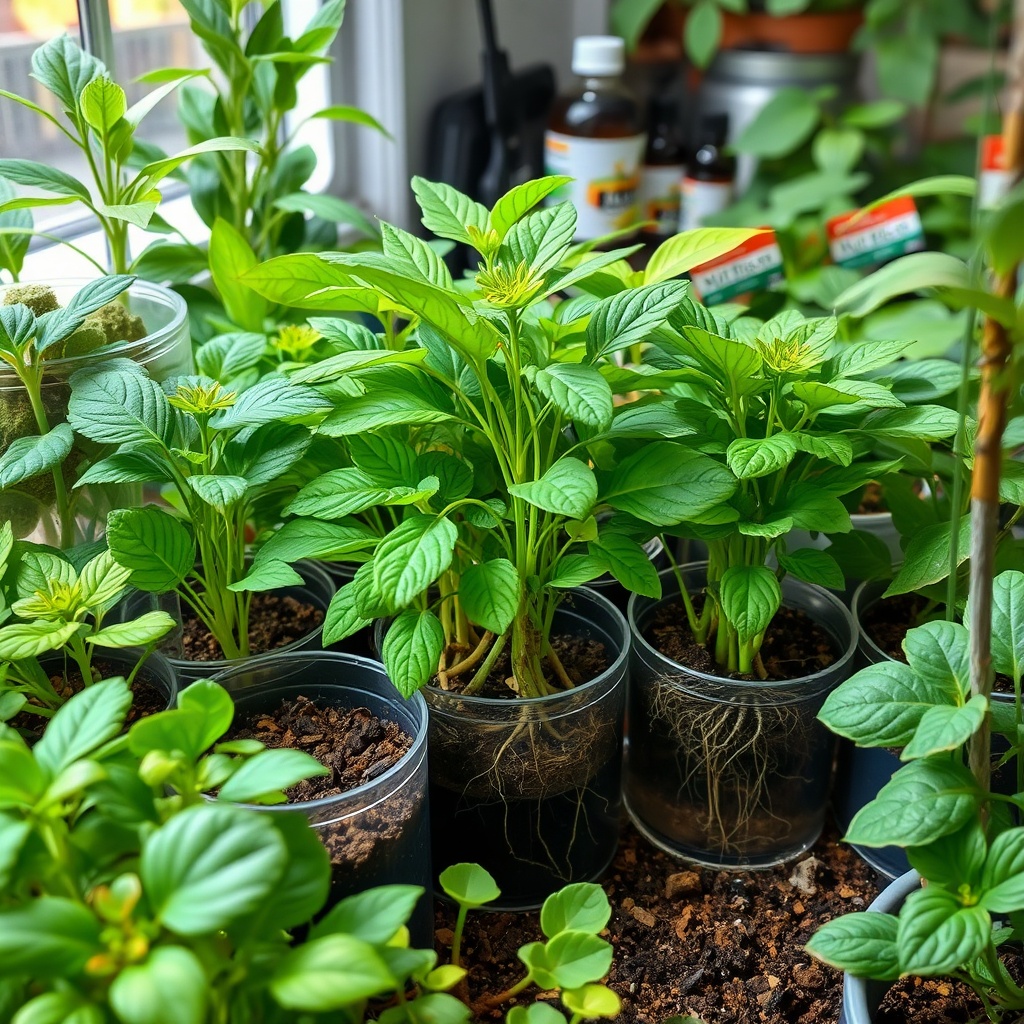Nutrient Essentials: What Your Fruiting Plants Crave
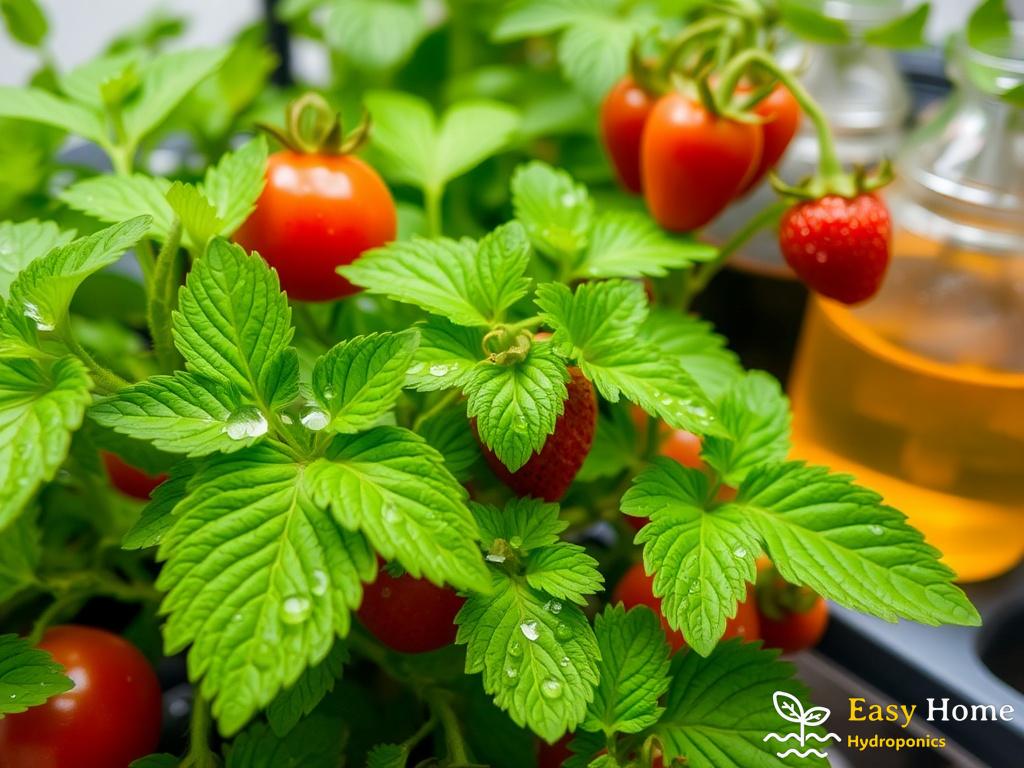
When it comes to hydroponic gardening, particularly for fruiting plants, understanding the specific nutrients they need is crucial for success. Unlike traditional soil gardening, where plants can somewhat fend for themselves, hydroponics requires a more hands-on approach. Nutrient solutions must be carefully balanced to ensure your plants thrive in small spaces. Let’s dive into the specific nutrients that will keep your plants healthy and productive.
The foundation of any nutrient solution begins with the macronutrients: Nitrogen (N), Phosphorus (P), and Potassium (K). Each plays a pivotal role in the development of your plants.
- Nitrogen: Essential for leafy growth, nitrogen is crucial during the early stages of your plants’ lives.
- Phosphorus: This nutrient is vital for root development and flowering, making it particularly important as your plants begin to fruit.
- Potassium: It helps in the overall functioning of the plant, including water regulation and enzyme activation.
Balancing these nutrients is key, especially when growing in confined spaces. A common NPK ratio for fruiting plants is 5-15-30, which emphasizes phosphorus and potassium to support flowering and fruiting.
While macronutrients are vital, don’t overlook the importance of micronutrients. These elements are needed in smaller amounts but are no less crucial for the health of your plants.
| Micronutrient | Role |
|---|---|
| Calcium | Strengthens cell walls and is essential for root and shoot growth. |
| Magnesium | Key component of chlorophyll, aiding in photosynthesis. |
| Iron | Crucial for chlorophyll synthesis and overall plant vigor. |
In small hydroponic systems, it’s easy to overlook these micronutrients, but they can make a significant difference in the quality of your fruiting plants. Regularly test your nutrient solution to ensure you’re providing a well-rounded diet.
Space-Savvy Solutions: Maximizing Nutrient Delivery
In the world of hydroponic gardening, especially when dealing with fruiting plants in limited spaces, effective nutrient delivery can make or break your garden’s success. The challenge lies in providing the right nutrients without overwhelming your setup or the plants themselves. Let’s explore some innovative strategies that enable you to maximize nutrient uptake while working within confined areas.
One of the most effective ways to ensure your plants receive the nutrients they crave is through precision feeding. By tailoring your nutrient solution to meet the specific needs of your plants at various growth stages, you can enhance both growth and fruit production.
- Custom Blends: Create nutrient solutions that are tailored to the developmental stages of your plants. For instance, a higher nitrogen blend may be beneficial during the vegetative stage, while increased phosphorus and potassium are essential during fruiting.
- Real-Time Monitoring: Utilize sensors and pH meters to monitor nutrient levels and adjust them as needed. This allows for immediate responses to any deficiencies or excesses.
- Foliar Feeding: This technique involves spraying a diluted nutrient solution directly onto leaves, providing a quick nutrient boost, especially useful in small spaces where roots may not absorb enough through the substrate.
Adopting vertical gardening techniques can significantly enhance nutrient delivery while maximizing space. By stacking multiple layers of plants, you not only save space but also create a microenvironment that utilizes nutrient solutions more efficiently.
Consider integrating a vertical hydroponic system that circulates nutrients from top to bottom. This method ensures that every layer of plants benefits from the same nutrient-rich solution. Additionally, the following table outlines the advantages of vertical systems:
| Aspect | Traditional Systems | Vertical Systems |
|---|---|---|
| Space Utilization | Limited | Maximized |
| Nutrient Distribution | Evenly spread but harder to manage | Efficient and direct |
| Water Usage | Higher due to runoff | Lower with recirculation |
| Light Exposure | Variable | Consistent across layers |
The choice of growth medium also plays a crucial role in nutrient delivery. Opting for mediums that retain moisture yet promote good aeration, like coconut coir or rock wool, can enhance nutrient absorption. Moreover, these mediums can be amended with slow-release fertilizers to provide a steady nutrient supply.
In summary, maximizing nutrient delivery in hydroponic systems for fruiting plants requires a blend of strategic feeding, innovative growing methods, and careful selection of growth mediums. By implementing these space-savvy solutions, you can cultivate a thriving garden in even the tightest of spaces.
pH Precision: The Key to Nutrient Uptake
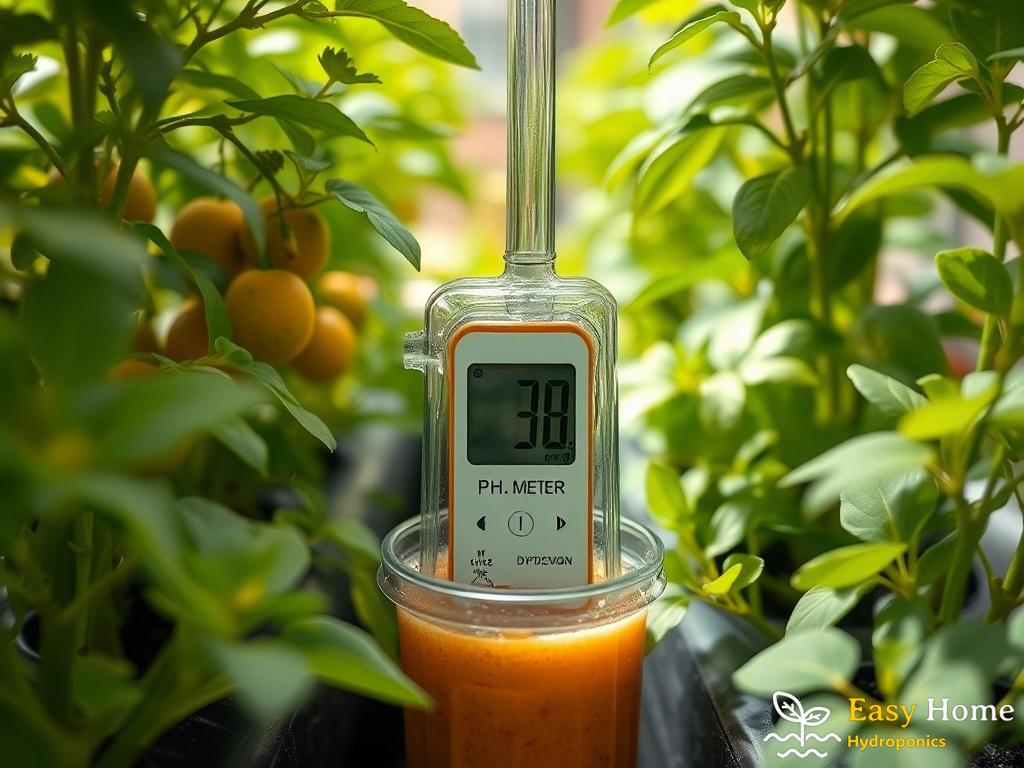
When it comes to hydroponic gardening, especially in compact environments, achieving the right pH balance is not just a detail—it’s a game changer. The pH level of your nutrient solution can significantly affect how well your fruiting plants absorb essential nutrients. If you’re aiming for a bountiful harvest, understanding the interplay between pH and nutrient availability is crucial.
The Optimal pH Range for hydroponic setups typically hovers around 5.5 to 6.5. This range is where most nutrients are readily available for uptake. Outside of this zone, nutrient lockout can occur, meaning your plants may suffer from deficiencies regardless of how much nutrient solution you provide. Maintaining this delicate balance is essential for thriving plants that produce abundant fruit.
Understanding Nutrient Availability is vital when considering pH levels. Each nutrient has a specific pH range where it is most soluble. For example, iron is most available at a slightly acidic pH of 5.5, while calcium prefers a more neutral pH closer to 6.5. As such, adjusting the pH not only affects the overall health of your plants but also dictates which nutrients they can effectively utilize.
| Nutrient | Ideal pH Range | Impact of pH Variance |
|---|---|---|
| Nitrogen | 6.0 – 7.0 | Deficiency if too low |
| Phosphorus | 6.0 – 7.0 | Lockout if too high |
| Potassium | 6.0 – 7.0 | Reduced absorption below 5.5 |
| Calcium | 6.0 – 6.5 | Deficiency at lower levels |
| Iron | 5.5 – 6.5 | Lockout above 7.0 |
To manage your nutrient solution’s pH, regular testing is imperative. Utilizing a quality pH meter will allow you to monitor fluctuations and make necessary adjustments promptly. If your readings drift outside the optimal range, you can employ pH up or pH down solutions to correct the imbalance. This proactive approach ensures that your plants have consistent access to the nutrients they need, ultimately leading to healthier growth and more fruitful yields.
In conclusion, mastering pH precision is not merely a technical requirement; it is an art that combines science and intuition. By understanding how pH affects nutrient uptake and taking steps to maintain the optimal range, you can create an environment where your hydroponic fruiting plants flourish, even in the tightest of spaces.
Tailoring Nutrient Ratios for Optimal Yield
In the intricate world of hydroponic gardening, particularly when cultivating fruiting plants in restricted environments, the significance of adjusting nutrient ratios cannot be overstated. Each phase of growth demands a distinct balance of nutrients to maximize yield and ensure the plants flourish. As we explore how to tailor these ratios, we’ll uncover the best practices to achieve optimal results in your compact garden.
Plants are not static; they evolve through various growth stages, each necessitating a unique nutrient composition. By recognizing these shifts, you can fine-tune your nutrient ratios effectively. Here’s a breakdown of how nutrient needs change:
- Seedling Stage: During this initial phase, a higher ratio of nitrogen (N) is essential to promote robust growth. A suggested NPK ratio is 10-5-5.
- Vegetative Stage: As plants develop, they require a balanced approach with nitrogen still playing a significant role. An NPK ratio of 15-10-10 is advisable, supporting leaf and stem growth.
- Fruiting Stage: When it’s time to bear fruit, the focus shifts. Increasing phosphorus (P) and potassium (K) is critical. A typical ratio of 5-15-30 will help ensure healthy flowers and abundant fruit.
Even with the right ratios in mind, continuous monitoring is vital for success. Environmental factors, including light, temperature, and humidity, can influence nutrient uptake. Regularly testing your nutrient solution allows for timely adjustments. Here’s a simple table to guide you on nutrient levels to monitor:
| Nutrient | Ideal Concentration (ppm) | Signs of Deficiency |
|---|---|---|
| Nitrogen | 150-200 | Yellowing leaves, stunted growth |
| Phosphorus | 50-70 | Poor root development, purple stems |
| Potassium | 200-250 | Brown leaf tips, weak stems |
By adopting a proactive approach to nutrient management, you can ensure that your hydroponic fruiting plants not only survive but thrive, yielding bountiful harvests even in the most compact spaces.
Monitoring and Adjusting: The Hydroponic Dance
In the realm of hydroponic gardening, especially when nurturing fruiting plants in confined spaces, the art of monitoring and adjusting nutrient levels transforms into a delicate dance. This intricate process not only ensures your plants thrive but also enhances their productivity, leading to a bountiful harvest. Understanding the rhythm of your plants’ needs and responding accordingly is crucial for any hydroponic gardener eager to maximize yield.
To maintain harmony within your hydroponic system, one must become attuned to the subtle signs that indicate nutrient levels may need adjustment. Regular observation is key; for instance, yellowing leaves can signal nitrogen deficiency, while a lack of vibrant blooms may indicate insufficient phosphorus. Equipped with this knowledge, you can swiftly adapt your nutrient solution to remedy any deficiencies. The challenge lies in maintaining a balance. Too much of a good thing can be detrimental, leading to nutrient lockout or toxic buildup. Therefore, careful monitoring and a proactive approach are essential.
Employing precise monitoring techniques is akin to having a backstage pass to your plants’ performance. Utilize tools such as pH meters and EC (Electrical Conductivity) testers, which provide real-time insights into the health of your nutrient solution. A pH meter will help you maintain that ideal range of 5.5 to 6.5, where nutrients are most accessible, while an EC tester will inform you of the nutrient concentration. Regular testing allows you to make informed decisions, ensuring your plants receive exactly what they need at every stage of growth.
Once you’ve gathered data from your monitoring efforts, it’s time to make responsive adjustments. If your readings indicate a deficiency, consider creating a custom nutrient blend tailored to your plants’ specific requirements. Remember that plants have distinct needs during different growth phases; hence, adjusting ratios accordingly can lead to remarkable outcomes. For example, during the flowering stage, a nutrient solution rich in phosphorus and potassium can encourage abundant fruit development. On the flip side, if the levels are off, a simple dilution or reinforcement with the appropriate nutrients can restore balance.
The journey of monitoring and adjusting is ever-evolving, much like a finely-tuned performance. As environmental factors such as temperature and humidity shift, so too can your plants’ needs. Embrace this dynamic relationship, and be prepared to adapt your strategies as your plants grow. By nurturing this connection, you not only increase the health and yield of your hydroponic garden but also develop a deeper appreciation for the intricate dance of life within your small space.

